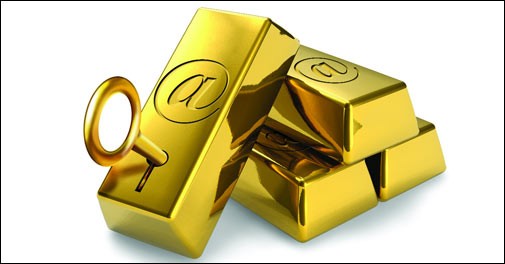Gold ETF Gold ETFs Funds
Post on: 27 Апрель, 2015 No Comment

How to Trade Gold ETFs
It would be hard to ignore the recent popularity of trading gold ETFs. Precious metals hit all time highs, propelling more investors into the so-called alternative investments. Gold and silver are naturally in the spotlight in economically challenged times. They offer the potential for hedging weaker performing stock portfolios as well as acting as a potential safe harbor for assets.
The haven trade is a popular one during recessions as investors look to carve out a nook for money until the storm passes. In the recent economic downturn, gold stood out along with the US dollar and Japanese Yen. Currencies that have traditionally low interest rates have often been popular for risk-adverse traders. However, the combined weight of environmental issues following Japans earthquake and nuclear disaster undermined the Yen and Japans economy. In the United States, a critical debt issue and spending problem coupled with a credit downgrade from one of the leading credit agencies tarnished a currency already weakened by economic policy. That left gold as one of the leading alternatives for investors. These same mechanics helped bring Gold ETFs into the limelight.
The big question for new investors or people wanting to dip their toes into the world of gold then becomes how to trade Gold ETFs.
Gold exchange-traded funds are securities. They are a share of a particular fund there are many choices traded on the designated exchange. These funds can be used for a variety of reasons to hedge part of a portfolio, or gain exposure to price movements in gold. Owning a share in a gold ETF would mean looking to gain if the price of physical gold and ideally, the ETF that is tracking it, rises. The exposure in Gold ETF markets is not limited to the physical metal. Investors can also look at the sector or industry ETFs that cover the gold mining arena, or the ETFs that have foreign exposure for holdings outside the US like Swiss or Asian gold holdings.
ETFs trade just like equities would in a regular stock market. A funded trading account will likely be required to trade most of these funds. Keep in mind that each trade will likely have specific fees, just like any other investment transaction. Speak to your broker about these costs. Some ETFs might have other fees associated with the purchase of a share, including charges for the storage of the funds assets, or physical gold. Again, this is something to research before selecting a particular gold fund. One of the positives associated with an ETF is that unlike the purchase of a basket of stocks or multiple trades, there is one share, one charge and usually no load fees.
This cost savings is most apparent for gold ETFs for the mining sector. To mimic what the goal of the ETF is, you would have to select individual companies and stocks and purchase several equities to try to target a certain price. ETFs simplify this process, although the returns may not be identical to the individual securities.
The exposure that an ETF provides can also be used from the short side. An investor can sell shares in a gold ETF to try to hedge other portfolio exposure. If your current investment portfolio contains a lot of long gold-related positions in mining stocks or a similar asset, you could sell a gold ETF to hedge that. Gold ETFs also offer options contracts for alternative risk management strategies.
ETFs are mostly transparent, publishing their assets on a regular basis, unlike say, a mutual fund which publishes this information infrequently. ETFs should be structured in an easy to understand way. They are also meant to follow the price of something else, which means they should avoid the aggressive management seen in some traditional funds. That can sometimes lower associated management fees. This makes Gold ETFs passively managed funds in most cases.
Keep in mind that many ETFs, including gold ETFs will have specific tax implications. Check these with your accountant. Part of the allure for some investors is that capital gains taxes are normally deferred until the ETF is sold.
ETFs do have some limitations, among them is the critique of some of the larger Gold ETFs in terms of their affiliation with big-name investment banks. Other objections involve the fact that you are not trading physical gold, and in that case, the price is not tracked as closely as some bullion fans may wish.
One of the biggest favors you can do for yourself if you are looking to start trading gold ETFs is to watch the ones that interest you. Take a look at the funds that you want to trade, watch their performance in relationship to the spot price of
physical gold. Research and do your own due diligence, and see if trading in Gold ETFs is compatible with your wealth management plans, risk tolerance levels, and overall trading goals.














